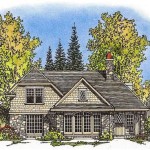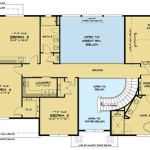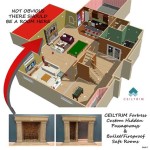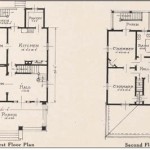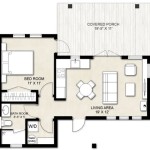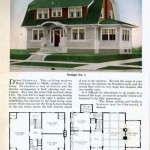Camp house plans outline the architectural design and layout of structures built for temporary or recreational use in natural settings. These plans encompass elements such as cabin size, room configuration, materials, and amenities. Whether you prefer a rustic getaway or a modern retreat, camp house plans serve as a blueprint for creating a comfortable and functional living space immersed in nature.
From cozy A-frames to spacious log cabins, camp house plans cater to diverse tastes and needs. Whether you’re seeking a shelter for weekend getaways or a more permanent vacation home, carefully crafted plans ensure efficient use of space, maximum comfort, and a seamless blend with the surrounding environment. As we delve into the details of camp house plans, let’s explore the key considerations and explore the myriad options available to suit your unique aspirations for an unforgettable outdoor experience.
Now that we have established an understanding of camp house plans, let’s delve into the main body of the article and explore the various aspects that contribute to their design and functionality.
When crafting camp house plans, several key considerations come into play:
- Site selection
- Cabin size
- Room layout
- Materials
- Amenities
- Energy efficiency
- Building codes
- Environmental impact
- Budget
- Future expansion
By carefully addressing these aspects, you can create a camp house plan that aligns with your specific needs and aspirations.
Site selection
Site selection is a crucial step in the camp house planning process, as it determines the overall character and functionality of your future retreat. Here are key factors to consider when choosing the perfect location for your camp house:
- Proximity to nature: The primary purpose of a camp house is to provide an immersive experience in nature. Choose a site that offers easy access to your desired outdoor activities, whether it’s hiking, fishing, swimming, or simply enjoying the peace and quiet of the wilderness.
- Privacy and seclusion: If you’re seeking a secluded getaway, look for a site that is tucked away from busy roads and neighboring properties. Consider factors such as natural barriers like trees or hills that can provide additional privacy.
- Access and infrastructure: Ensure that the site is accessible by road or trail, especially if you plan on bringing in building materials or supplies. Consider the availability of utilities such as electricity, water, and sewage, or plan for alternative off-grid solutions.
- Topography and soil conditions: The slope and soil conditions of the site will impact the design and construction of your camp house. Choose a site with stable soil and minimal grading requirements to minimize excavation costs and potential drainage issues.
Once you have identified a few potential sites, visit them in person to assess their suitability. Observe the surroundings, note the orientation of the sun and prevailing winds, and consider how these factors will affect the placement and design of your camp house.
By carefully considering these factors, you can select a site that not only meets your practical needs but also enhances the overall experience and enjoyment of your camp house.
Cabin size
The size of your camp house will depend on a number of factors, including the number of people it needs to accommodate, the desired level of comfort, and the available budget. Here are some key considerations related to cabin size:
- Number of occupants: Determine the maximum number of people who will be using the camp house at any given time. This will help you determine the minimum size of the cabin, ensuring there is adequate sleeping space and common areas.
- Sleeping arrangements: Consider the number and type of sleeping arrangements required. Will there be separate bedrooms, or will you opt for a more open layout with sleeping lofts or bunk beds?
- Living space: Plan for a comfortable living area that provides ample space for dining, relaxing, and socializing. The size of the living space will depend on the desired level of comfort and the number of occupants.
- Kitchen and bathroom: Determine the size and functionality of the kitchen and bathroom based on your cooking and bathing needs. Consider factors such as the number of appliances, storage space, and the availability of running water and sanitation.
Remember, every square foot of space adds to the cost of construction and maintenance. Carefully consider your needs and budget to determine the optimal size for your camp house.
Room layout
The room layout of your camp house is crucial for ensuring a comfortable and functional living space. Here are key considerations to keep in mind when planning the layout of your cabin:
- Flow and functionality: Design a layout that promotes a smooth flow of movement between different areas of the cabin. Avoid creating bottlenecks or awkward transitions. Consider the placement of doors, windows, and furniture to maximize space and natural light.
- Privacy and separation: If your camp house will accommodate multiple occupants, plan for sleeping areas that offer a degree of privacy and separation. Create separate bedrooms or sleeping lofts to provide a quiet and restful space for each person.
- Multi-functionality: In a camp house, space is often limited. Consider designing rooms that can serve multiple functions. For example, a living area can also incorporate a dining space, or a loft can be used for both sleeping and storage.
- Natural light and ventilation: Position windows strategically to take advantage of natural light and cross-ventilation. This will help reduce energy consumption and create a more comfortable and inviting living environment.
By carefully considering these factors, you can create a camp house layout that maximizes space, ensures privacy, and provides a comfortable and enjoyable experience for all occupants.
Materials
The choice of materials for your camp house will impact its durability, aesthetics, and overall cost. Here are some key considerations related to materials:
- Exterior walls: Options include wood siding, log walls, stone veneer, or metal panels. Wood siding is a popular choice for its affordability and versatility, while log walls offer a rustic and charming aesthetic. Stone veneer provides durability and fire resistance, and metal panels are a low-maintenance option.
- Roofing: Asphalt shingles are a cost-effective and widely available roofing material. Metal roofing is durable and fire-resistant, but it can be more expensive. Wood shakes or tiles can add a touch of rustic charm to your camp house.
- Windows and doors: Choose windows and doors that are energy-efficient and durable. Consider double-paned windows to minimize heat loss and gain. Solid wood doors provide security and insulation, while glass doors can let in natural light and offer scenic views.
- Interior walls and ceilings: Options include drywall, wood paneling, or tongue-and-groove boards. Drywall provides a smooth and versatile surface for painting or wallpapering. Wood paneling adds warmth and character to your camp house, while tongue-and-groove boards create a rustic and cozy atmosphere.
Consider the climate and local building codes when selecting materials for your camp house. Choose materials that are appropriate for the specific conditions and regulations of your area.
Amenities
Amenities play a significant role in enhancing the comfort and enjoyment of your camp house. Here are some key amenities to consider when planning your camp house:
- Kitchen: A well-equipped kitchen is essential for preparing meals and snacks during your stay. Consider amenities such as a stove, oven, refrigerator, sink, and ample counter space. If space is limited, opt for compact appliances and multi-functional tools.
- Bathroom: A functional bathroom is crucial for hygiene and sanitation. Plan for a bathroom with a toilet, sink, and shower or bathtub. Consider installing a composting toilet or incinerating toilet to reduce environmental impact if off-grid living is your goal.
- Heating and cooling: Ensure your camp house is comfortable year-round by installing an appropriate heating and cooling system. Options include wood stoves, propane heaters, or electric heat pumps. Consider passive solar design strategies to minimize energy consumption.
- Lighting: Adequate lighting is essential for safety and convenience. Install a combination of natural and artificial lighting sources. Position windows strategically to maximize natural light and use energy-efficient LED bulbs to minimize electricity consumption.
By carefully considering these amenities, you can create a camp house that meets your specific needs and provides a comfortable and enjoyable retreat in nature.
Energy efficiency
Incorporating energy-efficient measures into your camp house plans can significantly reduce your environmental impact and lower your energy bills. Here are key considerations for enhancing the energy efficiency of your camp house:
Insulation: Proper insulation is crucial for minimizing heat loss in cold climates and heat gain in warm climates. Use high-quality insulation materials in walls, ceilings, and floors to reduce energy consumption and maintain a comfortable indoor temperature.
Windows and doors: Choose energy-efficient windows and doors that are well-sealed to prevent air leakage. Look for windows with double- or triple-glazed panes and low-emissivity (Low-E) coatings to reduce heat transfer.
Appliances and lighting: Opt for energy-efficient appliances and lighting fixtures to minimize electricity consumption. Look for appliances with the ENERGY STAR label and use LED bulbs throughout your camp house.
Heating and cooling: If your camp house will be used year-round, consider installing an energy-efficient heating and cooling system. Explore options such as geothermal heat pumps, solar panels, or passive solar design to reduce your reliance on fossil fuels.
By implementing these energy-efficient measures, you can create a camp house that is not only comfortable and functional but also environmentally friendly and cost-effective to operate.
Building codes
Building codes are regulations established by local authorities to ensure the safety and habitability of structures. When planning your camp house, it is crucial to adhere to the applicable building codes in your area.
- Zoning restrictions: Zoning laws determine the permitted uses of land and may restrict the type and size of structures that can be built in specific areas. Before finalizing your camp house plans, check with your local zoning board to ensure that your plans comply with the zoning regulations for your property.
- Building permits: Most municipalities require a building permit before construction can begin. The building permit process involves submitting your plans for review and approval by the local building department. The department will assess your plans for compliance with building codes and issue a permit if everything is in order.
- Structural requirements: Building codes specify minimum standards for the structural integrity of buildings. These requirements include
- Health and safety standards: Building codes also address health and safety concerns, such as fire safety, ventilation, and sanitation. These codes ensure that your camp house is equipped with adequate fire protection systems, proper ventilation to prevent moisture buildup, and a safe and sanitary water supply and waste disposal system.
By adhering to building codes, you can ensure that your camp house is safe, habitable, and
Environmental impact
When planning and constructing your camp house, it is essential to consider its potential environmental impact. Here are key factors to keep in mind:
- Site selection: Choose a site that minimizes disturbance to natural habitats and ecosystems. Avoid building on sensitive areas such as wetlands, steep slopes, or areas with endangered species.
- Building materials: Opt for sustainable and eco-friendly building materials such as reclaimed wood, recycled materials, and low-VOC (volatile organic compound) paints and finishes. These materials have a lower environmental impact and contribute to a healthier indoor environment.
- Energy efficiency: Incorporate energy-efficient measures into your camp house plans to reduce your carbon footprint. Utilize natural light, install energy-efficient appliances and lighting, and consider renewable energy sources such as solar panels.
- Water conservation: Implement water-saving practices by installing low-flow fixtures, rainwater harvesting systems, and drought-tolerant landscaping. These measures can reduce your water consumption and protect local water resources.
By carefully considering these factors, you can create a camp house that is not only comfortable and functional but also minimizes its environmental impact and promotes sustainability.
Budget
The budget for your camp house will largely determine the scope and scale of your project. Before you begin planning, it is essential to establish a realistic budget that takes into account all aspects of the construction process.
- Land acquisition: If you do not already own land, the cost of acquiring a suitable building site will be a major factor in your budget. Land prices vary widely depending on location, size, and amenities, so it is important to research the market and determine what you can afford.
- Construction costs: The cost of constructing your camp house will depend on a number of factors, including the size and complexity of the structure, the materials used, and the labor costs in your area. It is important to get bids from multiple contractors to ensure that you are getting a fair price.
- Materials: The cost of materials will vary depending on the type and quality of materials you choose. It is important to compare prices from different suppliers and to consider the long-term cost of maintenance and repairs.
- Permits and fees: You will need to obtain building permits and pay various fees to the local authorities before you can begin construction. The cost of permits and fees will vary depending on your location and the size of your project.
In addition to these direct costs, you should also factor in the cost of furniture, appliances, and other furnishings for your camp house. It is also important to set aside a contingency fund for unexpected expenses that may arise during the construction process.
Future expansion
When planning your camp house, it is wise to consider the potential for future expansion. This will ensure that your camp house can adapt to your changing needs and desires over time.
There are several factors to consider when planning for future expansion. First, think about how your needs may change in the future. For example, if you plan to start a family, you may want to design your camp house with the potential to add on additional bedrooms. Alternatively, if you anticipate using your camp house for extended periods, you may want to consider adding a larger kitchen or living area.
Second, consider the physical constraints of your property. Make sure that there is enough land available to accommodate any future additions to your camp house. You should also consider the slope of the land and the location of any existing trees or other obstacles that could affect construction.
Finally, think about the financial implications of future expansion. Adding on to your camp house can be a significant investment, so it is important to factor in the cost when making your plans.
By considering these factors, you can create a camp house plan that is flexible and adaptable to your future needs. This will ensure that you can enjoy your camp house for many years to come.










Related Posts

